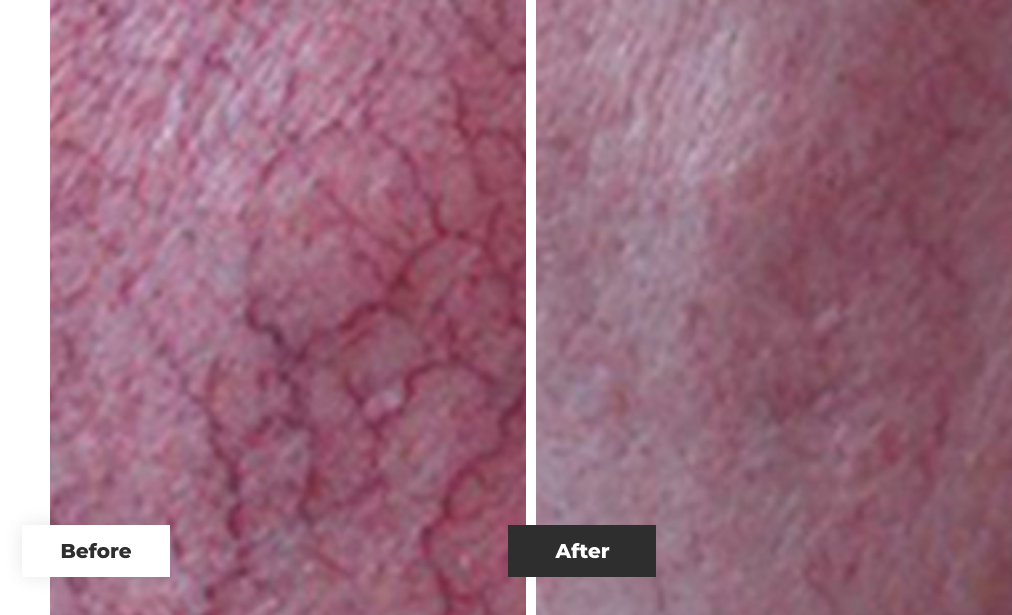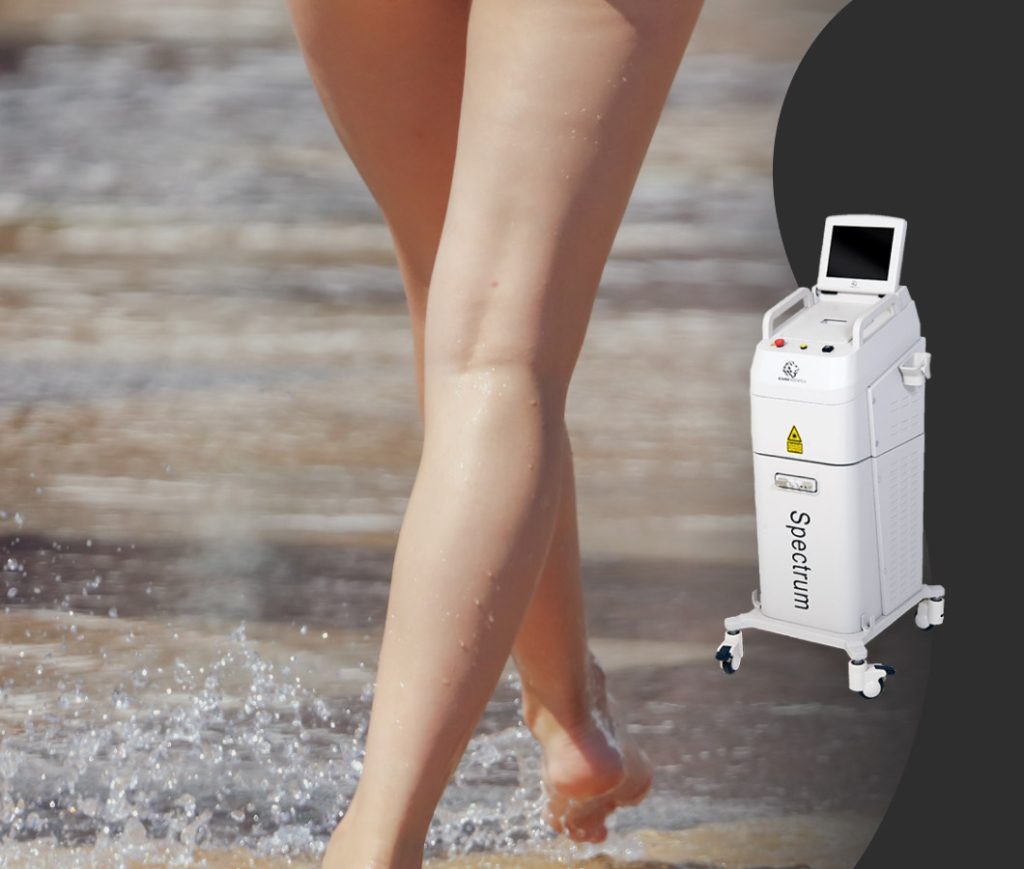Vascular Lesions Treatment
Laser treatment that allows the treating of visible vessels, broken capillaries, spider veins, and vascular lesions by using laser energy.
Vascular Lesions Treatment Benefits
- Improved Appearance: Treatments lead to clearer skin, addressing visible blood vessels.
- Enhanced Complexion: Skin tone and texture improve, promoting a smoother appearance.
- Increased Confidence: Successful treatment boosts self-assurance by addressing skin imperfections.

How does the Vascular Lesions Treatment work?
The laser gives energy to the skin, which is absorbed by blood vessels, scars, port wine stains, hemangiomas, and other vascular lesions. This relatively quick, comfortable procedure can eliminate blood vessels by precise tissue heating, i.e. energy is directed against the vessels alone and does not alter the surrounding skin.

Long Pulsed YAG (LPY)
This laser offers precise treatment for visible vessels, spider veins, and vascular lesions, tailored to various skin conditions.
- Effective Vascular Treatment: LPY Laser collapses and seals veins, diminishing their appearance on the skin's surface.
- Targeted Precision: Laser energy heats vessels precisely, leaving surrounding skin unaffected for comfortable treatment.
- Lasting Results: Regular sessions with sun protection yield longer-lasting outcomes, preventing future lesions.
Frequently Asked Questions
The 2940nm Long Pulsed YAG Laser provides practitioners with the capability to accurately address visible vessels, broken capillaries, spider veins, and vascular lesions through laser energy. The treatment is customized to align with an individual’s skin condition and desired outcome. The LPY laser can be applied to all areas of the
Light to Medium skin tones are ideal candidates for this procedure.
Eligibility for long-pulsed YAG laser treatments depends on various factors, encompassing age, general health, the severity of spider or varicose veins, symptoms experienced, personal goals, and the provider’s assessment of the condition’s progression. Nonetheless, the typical candidates are individuals with cherry angiomas, superficial and clustered vessels, or visible spider veins
If you’re getting your legs treated, it might be helpful to bring a pair of shorts to wear during the procedure. In some cases patients may be asked to stop taking certain medications that thin the blood
Discomfort during the procedure is generally minimal and often likened to the sensation of a “snap of a rubber band.” Achieving your desired outcome might necessitate undergoing multiple treatment sessions.
After the procedure, there might be some swelling and irritation, particularly depending on the treated area. Nevertheless, most treatments have minimal downtime and only a few side effects. It’s important to avoid sunlight and employ sunscreen or antibiotic ointments to facilitate healing and prevent damage. Your doctor may recommend anti-aging skincare products. If a scab forms, it’s essential not to pick at it, as this could lead to scarring.
Possible after-effects of the treatment may include discomfort, skin irritation, discoloration, and a sensation similar to mild sunburn. Occasionally, the pigment cells may incur damage, resulting in areas of the skin appearing darker or paler. While white patches or scars are rarely permanent, they could occur as very infrequent complications.
- Uncontrolled diabetes with impaired wound healing
- Those with dark skin tones should avoid this
- Those who have history of keloids
- Current or recent skin infection
- Pregnant or breastfeeding
- Current use of chemotherapy or recent diagnosis of cancer
Currently taking blood thinners or known clotting disorders
Some can see results immediately. The most favorable outcomes are typically observed after 1-2 treatment sessions. For the resolution of leg veins, it generally takes around 8-12 weeks. By the end of this period, certain vessels may have vanished, while others might have lightened or not been impacted. It’s possible that a series of treatments could be required for some veins. Moreover, veins located further down on the body tend to be more resistant and may take longer to disappear.